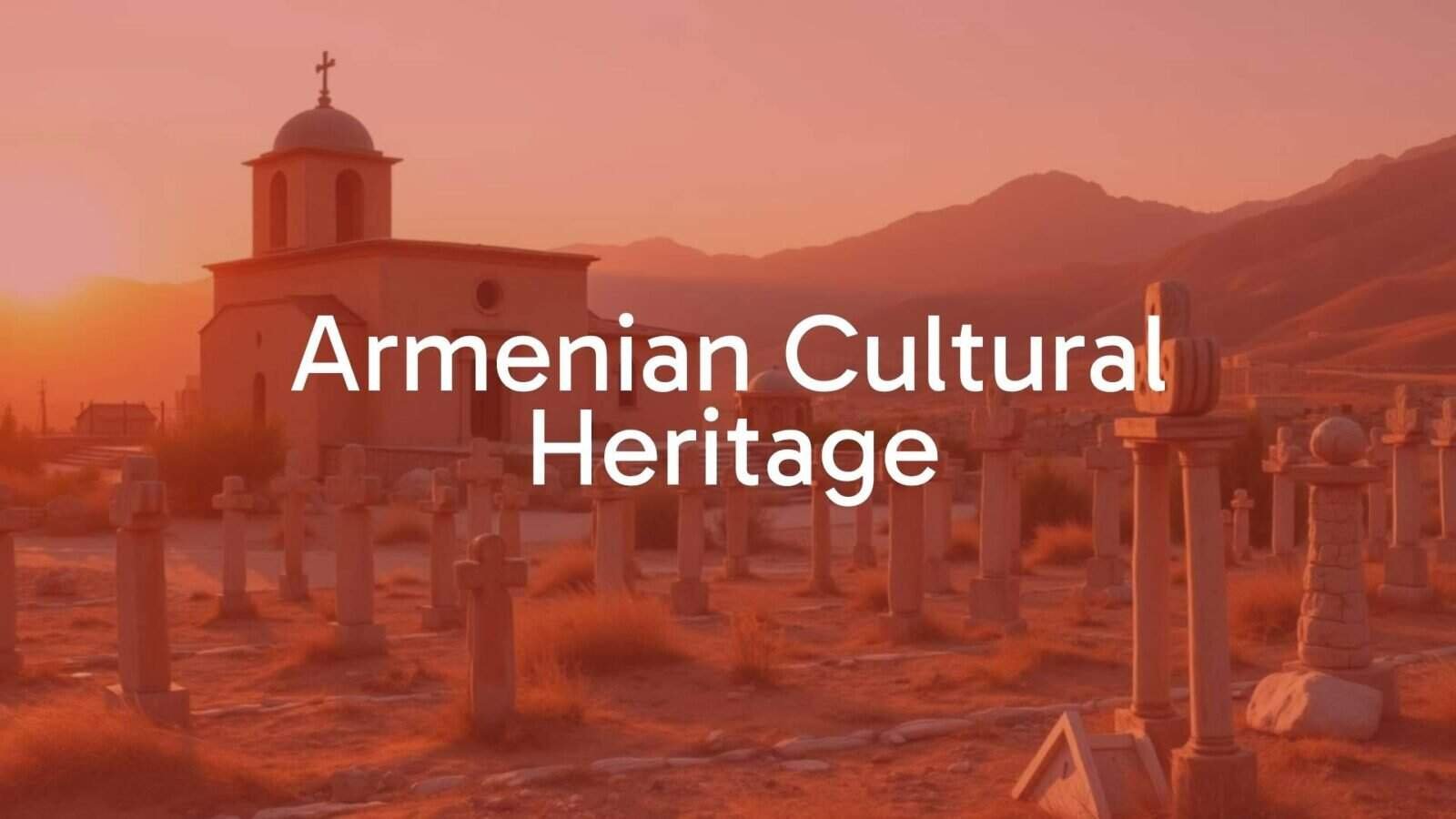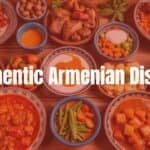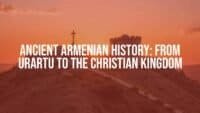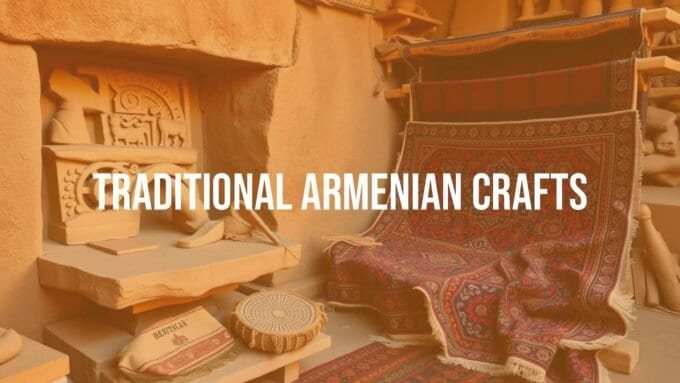Armenian cultural heritage brings together many centuries of history, faith, art, and perseverance. It holds the memories, customs, and art of a people who lived at a meeting point of many cultures, shaping and being shaped by neighbors near and far. This heritage is alive and grows with time while staying close to ancient roots. From its language and books to its buildings, food, and strong communal spirit, Armenian culture shows the creativity and strength of its people. It invites people to learn and connect with a deep story that matters both to the world and to Armenians everywhere.
What Is Armenian Cultural Heritage?
Armenian cultural heritage is the mix of physical and living traditions passed down over generations. It includes old monuments, manuscripts, music, dance, food, and oral stories. It reflects a people who faced hard times, including persecution and exile, yet kept and grew their culture. This heritage is not a box of old objects; it is active and shapes Armenian life today, giving a strong sense of community and identity at home and across the diaspora.
Key Elements of Armenian Cultural Identity
Several main pillars support Armenian cultural identity:
- The Armenian Apostolic Church, which shaped spiritual life, art, and learning.
- The Armenian language and its unique alphabet from the 5th century, a strong bond across regions and time.
- Folk arts such as carpet weaving, embroidery, and khachkars (cross-stones), which show skill and faith.
- Cuisine and shared meals, which bring families and communities together.
These parts work together to form a shared way of life that carries meaning in daily routines and major life events.
The Historical Significance of Armenia’s Heritage
Armenia sits between Asia and Europe and has a past that reaches back thousands of years, including Paleolithic sites and the world’s oldest known winery. In 301 AD, Armenia adopted Christianity as a state religion, which shaped its path and led to the rise of landmark churches and monasteries. These sites help the world study early Christian art, building styles, and learning. The long record of keeping this culture through wars and foreign rule shows how strong and important it is.
Language, Literature, and Education in Armenian Heritage
The Armenian language and its writings carry history, identity, and memory. Armenian education, from early schools to modern systems, shows steady care for learning and culture, even in hard periods. This can be seen in the way Armenian schools survived, and in the lasting reach of Armenian books and the press.
Armenian Language and Alphabet
The Armenian alphabet, created by Mesrop Mashtots in 405 AD, is a core part of Armenian identity. It allowed broad translation of sacred texts and sparked a strong literary life that still thrives. The script is both useful and beautiful, and it has joined Armenians across borders for more than 1,600 years. Its creation opened a golden age for writing and study and helped keep Armenian thought and identity alive. The language itself stands as a clear sign of the nation’s spirit.

Distinctive Dialects in Armenian Communities
Though Armenians share a common written language, regional speech formed two main dialects: Eastern and Western Armenian. Western Armenian grew in the Ottoman Empire; Eastern Armenian took shape in the Caucasus and Persia. These differences add depth and color, with unique phrases and oral styles that mirror each group’s path. While global trends put pressure on smaller dialects, many people and groups work to keep them in daily use.
Role of Armenian Schools and Educational Institutions
Armenian schools have long been key places for keeping culture and identity. Under foreign rule, schools often guarded the language, history, and faith. In the Ottoman Empire, Armenian schools were limited and later allowed in the late 18th century. By 1838, there were 439 Armenian schools in Anatolia, including higher institutions like the Cemeran School. The Armenian Genocide led to the loss or repurposing of many schools, yet the push for learning stayed strong. In Istanbul, for example, 18 Armenian schools were active as of 2005, and they still raise new generations who know their roots.
Literature’s Influence on Armenian Cultural Memory
Armenian literature carries stories, values, and feelings across time. The 19th-century Revival period (Zartonk) led to modern Armenian writing. Authors such as Siamanto, Hagop Baronian, and Krikor Zohrab, writing for papers like Arevelk (Orient) and Hayrenik (Fatherland), fed national awareness and shaped ideas. Many used Eastern or Western Armenian in place of classical forms and wrote about events like the 1878 Berlin Treaty and the Hamidian massacres. Their work kept public memory vivid, sharing both pain and hope.
Importance of the Armenian Press and Publications
The Armenian press helped keep language and debate alive and linked scattered communities. In the 19th century, Constantinople alone had many museums, presses, and journals. Papers like Arevelk and Hayrenik were key during the Revival, giving space to new writers and civic voices. For about 250 years, up to around 1950, more than 2,000 books in Turkish were printed with Armenian letters (Armeno-Turkish). Both Armenians and Ottoman elites read them, and Armenian script even appeared on official documents. Today, daily papers such as Agos, Jamanak, and Marmara still publish in Istanbul, showing how the press continues to bind the community together.
Preserving Armenian Place Names
Place names carry history, geography, and culture. Many Armenian toponyms were changed over time. Under Sultan Abdulhamit II, the word “Armenia” was banned in 1880 and replaced with terms like “Anatolia” or “Kurdistan.” This policy continued later, along with changes to surnames and the record of past events. Etymologist Sevan Nişanyan estimates that about 3,600 Armenian place names were altered, especially in eastern provinces. Names with “-kert,” “-shen,” and “-van” (markers of Armenian origin) were often targeted. After the Armenian Genocide, with Armenians removed from much of eastern Turkey, renaming sped up, cutting ties to centuries of presence on that land.
Armenia’s Religious and Spiritual Heritage
Armenia’s identity is closely linked to Christianity. As the first country to adopt it as a state faith, Armenia created church designs that reflect deep belief and artistic skill. These churches and monasteries are sacred places that hold memory, learning, and art across many centuries.
Notable Armenian Churches and Monasteries
Armenia has many famous churches and monasteries, several on the UNESCO World Heritage list. They show the depth of the country’s spiritual and building traditions.
| Site | Year Inscribed | Highlights |
|---|---|---|
| Monasteries of Haghpat and Sanahin | 1996, 2000 | Medieval complexes blending Byzantine and local styles |
| Geghard Monastery and Upper Azat Valley | 2000 | Partly carved into rock; famed acoustics; relic linked to the spear that wounded Christ |
| Echmiatsin Cathedral and Churches; Zvartnots | 2000 | Center of the Armenian Church; grand 7th-century ruins at Zvartnots |
These places are active centers of faith and culture, not just stops for visitors.
The Role of Religious Architecture in Cultural Preservation
Churches and monasteries have long stood as symbols of Armenian identity and strength. Many served as schools, scriptoria, and art workshops, especially during times of foreign rule. Their strong stone walls helped them last through wars and quakes, grounding communities in place and time. The Holy Cross of Aghtamar on Lake Van, with its rich reliefs, guided spiritual and cultural life for centuries. Even when buildings were damaged or reused, like the Holy Apostles Church in Kars or the destroyed Saint Karapet Monastery, their meaning endured. Efforts to protect or rebuild these sites, even as ruins, show how central they are to cultural continuity.
Traditional Arts, Crafts, and Cuisine of Armenia
Armenian culture also lives in everyday art and food. Crafts, music, and cooking reflect skill, community ties, and a close link to land and season.
Extraordinary Armenian Crafts and Artisanship
Armenian crafts grow from centuries of practice and care. Khachkar carving turns stone into detailed cross-stones that carry memory and faith. Carpets are famous for bold colors, complex patterns, and meaning passed from one generation to the next. Embroidery, metalwork, and pottery also show this long craft line. Visitors can still learn with local masters-carving cross-stones, weaving rugs, and stitching fine designs-so these skills stay alive.

- Khachkar carving (cross-stones)
- Carpet weaving
- Embroidery
- Metalwork
- Pottery
Culinary Traditions: Tasting Armenian Food and Wine
Armenian food blends flavors from the Middle East, the Mediterranean, and Eastern Europe. It favors fresh produce, herbs, and slow cooking that brings people together. Common dishes and staples include:
- Dolma (grape leaves or vegetables stuffed with rice and meat)
- Khorovats (barbecue)
- Lavash (thin flatbread)
- Pickles, cheeses, and fresh salads
Armenia also has a very old wine story. The oldest known winery was found there, and winemaking spans about 6,000 years. Wine tastings today connect guests to this deep past. Meals often become cultural moments where heritage and hospitality meet at the table.
Festivals and Cultural Events in Armenia
Festivals and events keep traditions visible and shared. They bring art, music, food, and faith into public spaces and help people link past and present.
Annual Festivals Celebrating Armenian Heritage
Armenia hosts many yearly events that draw locals and visitors into shared practices:
- Vardavar: people splash water on one another, a joyful act now tied to the Transfiguration of Christ.
- Wine festivals: regional events with tastings, music, and dance.
- Music and dance festivals: folk and modern performances on open stages.
- Craft fairs: artisans sell and show their work, from textiles to wood and stone.
These gatherings help keep living traditions active and pass them to new generations.
Museums, Galleries, and Preservation Efforts
Museums and galleries keep objects safe and explain their stories. New work also focuses on living traditions, so crafts, songs, and rituals stay part of daily life.
Discovering Armenian Heritage in Regional Museums
Regional museums show local stories within the wider Armenian picture. They display finds from digs, medieval texts, costumes, farm tools, and folk art. In Yerevan, the History Museum of Armenia holds the double doors of the Holy Apostles Monastery, moved there in 1925, linking visitors to a major site. These museums teach, connect communities to ancestors, and highlight local skill and creativity.
Modern Strategies for Safeguarding Intangible Heritage
Living heritage-oral tales, music, dance, social customs, festivals, and crafts-needs different care than buildings. Current methods include:
- Recording oral histories and performances on audio and video
- Documenting craft steps and recipes
- Workshops and apprenticeships for passing skills to the young
- Digital archives and online access for wider reach
- Partnerships with groups like UNESCO to recognize and support projects
These efforts help keep skills like weaving, embroidery, and traditional cooking in daily use.
Exploring Armenia’s Regions and Hidden Gems
Armenia’s lesser-known places add detail and texture to the country’s story. Visits beyond busy routes bring a closer view of local styles, history, and craft.
Regional Diversity in Armenian Cultural Heritage
Though small, Armenia shows strong regional variety shaped by land, history, and custom. Mountain valleys in the north differ from the Ararat plain and the rocky south. Monasteries in Lori’s gorges are unlike Vayots Dzor’s sunlit complexes. Music, dance, and even daily recipes change from area to area. The whole picture shows how communities adapted to their surroundings while holding a shared identity.
Guided Journeys to Armenia’s Lesser-Known Sites
Guided trips to remote monasteries, old fortresses, and quiet villages offer close contact with the past. A guide with local roots can explain a ruined chapel’s carvings, point out a hidden field of khachkars, or share a village craft still in practice. These visits deepen cultural understanding and support careful tourism that helps keep fragile places standing.
Challenges and Risks Facing Armenian Cultural Heritage
Armenian heritage faces many dangers, both planned and from neglect. The loss of sites and traditions affects communities in Armenia and in historic Armenian lands.
Threats of Cultural Genocide and Destruction
Raphael Lemkin used the term “cultural genocide” to describe the planned removal of a group’s cultural, spiritual, and national life. Armenian culture has faced such attacks. During and after the Armenian Genocide, the Ottoman authorities targeted Armenian clergy, churches, and monasteries and burned many medieval manuscripts. Witness Fayez el Hussein wrote that Armenian cultural items were sold cheaply and textbooks used as wrapping paper. In Republican Turkey, Armenian traces were often treated as unwanted proof of presence. In 1974, UNESCO reported that out of 913 Armenian monuments in Eastern Turkey after 1923, 464 were gone, 252 were in ruins, and 197 needed repair. Some buildings were blown up, used as targets, or stripped for building stone. Many churches became mosques, stables, shops, or prisons. This pattern shows how planned erasure harms a people’s memory and life.
Recent Endangered Heritage Sites
New cases show the danger is ongoing. A report by the Cornell-led Caucasus Heritage Watch (CHW) documented the near-complete loss of Armenian sites in Nakhchivan, Azerbaijan, from the late 1990s to 2011. Using high-resolution satellite images, CHW found that 108 of 110 medieval and early modern monasteries, churches, and cemeteries were destroyed. Sites like St. Hovhannes Church of Chahuk and St. Karapet Monastery of Abrakunis were leveled, and some areas later held new mosques. CHW now warns that Karabakh’s Armenian monuments face similar risks. The destruction of St. Sargis church in Mokhrenes between March and July 2022 broke an International Court of Justice order to prevent such acts. Much of this damage happens out of public view, which makes outside attention and steady protection efforts even more urgent.
The Future of Armenian Cultural Heritage Preservation
Facing both old and new threats, the path forward rests on active work, new tools, and shared support at home and abroad. Many groups and communities are stepping in to protect what remains and revive what they can.
Emerging Initiatives and Community Involvement
New projects and strong local action are shaping the next chapter. CHW uses satellite “heritage forensics” to track change and provide clear proof when sites are harmed. Community groups restore buildings, restart crafts, and offer cultural classes. Storytelling, music programs, and cooking workshops help pass living traditions to younger people. Armenians in the homeland and the diaspora play a key role by moving from admiration to hands-on care, turning shared pride into shared duty.
How to Support and Stay Informed about Armenian Heritage
There are many ways to get involved and stay up to date:
- Back trusted groups and research centers such as the UCLA Promise Armenian Institute, the Fowler Museum at UCLA, and the Cornell-led CHW.
- Attend talks and conferences, like the full-day Fowler Museum event on Armenian cultural heritage.
- Donate to preservation funds or volunteer with cultural schools and craft programs.
- Share reliable information on social media and in classrooms to build awareness.
- Support Armenian artisans, small businesses, and cultural travel that benefits local communities.
By taking part, people help keep Armenian culture strong today and ready to grow tomorrow, carrying forward a legacy rooted in deep memory and shared hope.















Leave a comment